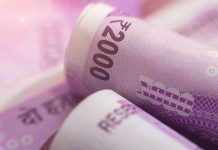UK retail sales unexpectedly soared in volume by an entire 1% in August. This is significantly ahead of analysts’ forecast of 0.2%, and also ahead of last month’s 0.7% increase. Most notably, the increase in sales volume came despite a large annual price increase. These numbers suggest that the UK consumer is resilient despite an increasingly challenging economic environment. As prices increase and wages decrease as an effect of inflation, analysts had assumed that consumers would limit their spending. Instead, with consumer spending on nonessential items at its highest level in 25 years, that doesn’t appear to be the case. This is great news for UK economy, which depends heavily on consumer spending. As a result, the pound rallied ahead.
| Why does strong economic data boost a country’s currency? |
|---|
| Solid economic indicators point to a strong economy. Strong economies have strong currencies because institutions look to invest in countries where growth prospects are high. These institutions require local currency to invest in the country, thus increasing demand and pushing up the money’s worth. So, when a country or region has good economic news, the value of the currency tends to rise. |
Thanks to strong UK retail sales, the pound remained resilient versus the dollar for much of the previous session. Then, however, the release of US Federal Reserve statement boosted the dollar, pulling the pound US dollar exchange rate down from US$1.36 to US$1.3475 for sterling. Since the release, the rate has remained at roughly the same level.
| What do these figures mean? |
|---|
|
When measuring the value of a pair of currencies, one set equals 1 unit and the other shows the current equivalent. As the market moves, the amount will vary from minute to minute. For example, it could be written: 1 GBP = 1.28934 USD Here, £1 is equivalent to approximately $1.29. This specifically measures the pound’s worth against the dollar. If the US dollar amount increases in this pairing, it’s positive for the pound. Or, if you were looking at it the other way around: 1 USD = 0.77786 GBP In this example, $1 is equivalent to approximately £0.78. This measures the US dollar’s worth versus the British pound. If the sterling number gets larger, it’s good news for the dollar. |
Investors will now turn their attention to Brexit developments; especially on UK Prime Minister Theresa May’s upcoming speech in Florence on Friday. May is expected to lay out her Brexit vision and offer a price for the UK’s divorce from the EU. Any signs that May is aiming for a smooth Brexit may offer some support to the pound as it heads towards the weekend.
US rate hikes remain on track despite inflation mystery
The dollar received a sharp boost on Wednesday evening after the US Federal Reserve revealed not only that it would end its bond buying programme, but also that it intends to stick to its current path of tightening interest rates. The market was calm and collected in the face of the Fed’s announcement likely because the Federal Reserve has been preparing the markets for the unwinding – also known as balance sheet normalisation – for many months now. However, some dollar investors had still assumed that the Fed would possibly hold off on more interest rate hikes until inflation moved higher. In short, Federal Reserve chief Janet Yellen refused to be derailed by the stubbornly low US inflation rate.
As the market received confirmation that the US Federal Reserve would continue their planned interest rate hikes, the value of the dollar shot up.
| Why do raised interest rates boost a currency’s value? |
|---|
| Interest rates are key to understanding exchange rate movements. Those who have large sums of money to invest want the highest return on their investments. Higher interest rate environments tend to offer higher yields. So, if the interest rate or at least the interest rate expectation of a country is relatively higher compared to another, then it attracts more foreign capital investment. Large corporations and investors need local currency to invest. More local currency used then boosts the demand of that currency, pushing the value higher. |
|
This article was initially published on TransferWise.com from the same author. The content at Currency Live is the sole opinion of the authors and in no way reflects the views of TransferWise Inc. |





